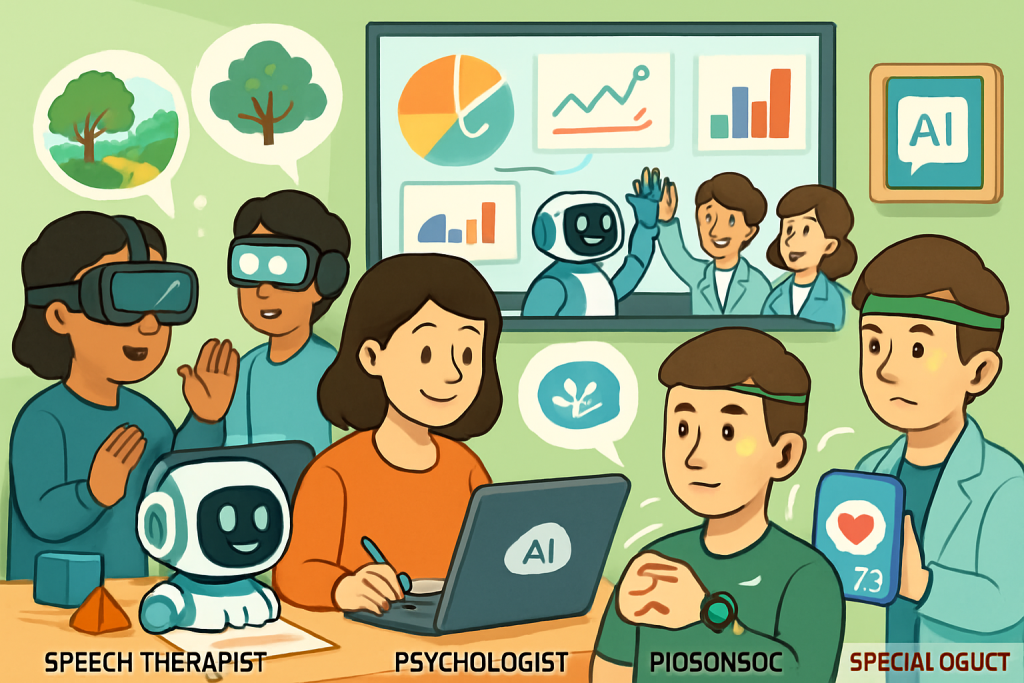
OpenAI’s o3 and o4-mini models, along with their upcoming successors, are reshaping practice for therapists, special educators, and allied health professionals with capabilities that extend far beyond traditional chatbots. Now, these models serve as true digital agents—autonomously managing multi-step, real-world tasks using an integrated suite of tools.
What’s New: ChatGPT Agent Brings Unified Tool Autonomy
OpenAI’s latest agentic platform empowers users to delegate full workflows, not just single answers. The ChatGPT agent can:
- Actively select and combine tools: From web search, file analysis, code execution, and image generation to interacting with websites, the agent understands which resources best fit your needs—even prompting for secure logins if necessary.
- Reason and act in sequence: It navigates browser sessions, completes detailed research, downloads or manipulates files, and delivers ready-to-use artifacts like editable slides and comprehensive reports.
- Handle complex tasks from start to finish: Whether summarizing treatment trends, preparing an IEP dashboard, or synthesizing the latest research, the agent autonomously adapts its approach for each specific request.
- Keep sessions context-aware: Improved memory allows the AI to reference earlier interactions, sustaining continuity across extended planning or documentation tasks.
Key Features for Therapy and Education Workflows
1. Intelligent Tool Autonomy
- Dynamic Tool Selection for every request streamlines work processes.
- Adaptive Output Formatting delivers summaries, tables, visuals, or editable documents tailored to clinical, educational, or administrative needs.
- Workflow Streamlining frees clinicians to focus on client care.
2. Advanced Reasoning and Synthesis
- Synthesizes multisource data: Aggregates research papers, clinical notes, records, and web resources for insightful recommendations.
- Supports complex cases and customized interventions through deep reasoning.
3. Enhanced Memory & Real-Time Knowledge Updating
- Session continuity: Maintains relevant details across long interactions.
- Always up-to-date: Integrated web search roots responses in the latest research, policy, and best practices.
4. Visual Reasoning and Generation
- Image analysis and creation: Enables tasks like AAC symbol design, visual teaching aids, and data visualizations (charts, graphs, progress dashboards).
5. Creative Resource Generation
- Instantly builds therapy workbooks, social stories, visual schedules, or custom activities—adapting to language, reading level, or communication style as needed.
6. Seamless Collaboration and Integration
- Supports multidisciplinary teams: Easily prepares integrated reports, summarizes stakeholder input, and helps coordinate care meetings.
- Automates report and IEP preparation with synthesized, actionable summaries and plans.
Transforming Daily Practice Across Roles
| Discipline | AI-Enabled Use Cases |
| Speech Therapists | Real-time AAC resource design, progress tracking, auto-documentation |
| Occupational Therapists | Sensory plan creation, assistive device recs, integrative data views |
| Psychologists | Rapid literature synthesis, report generation, mood tracker analytics |
| Psychomotor Therapists | Custom play-based programs, motor progress visuals, movement analysis |
| Special Educators | IEP progress dashboards, personalized lesson planning, multilingual material design |
Key Benefits
- Efficiency: Automated support dramatically reduces admin work.
- Precision: Multi-tool reasoning sharpens assessment and planning.
- Personalization: Instantly tailored resources and interventions.
- Collaboration: Integrated reporting, real-time data, and smoother team communication.
Powered by Real-World Agentic Innovation
OpenAI’s agentic upgrades reflect a leap in practical usefulness across professional and personal workflows. Agents can now:
- Visit and interact with websites graphically or via API
- Edit spreadsheets, create presentations, and synthesize research
- Execute code and reason over data within secure, user-controlled sessions
- Integrate with third-party connectors such as Gmail or calendar tools for broader workflow management
All actions remain transparent and user-controlled, with the agent prompting for permission before impactful steps—safeguarding data and minimizing risk.
Curious how this could transform your work? Discover specific use cases and hands-on tips in our full article, and explore how agentic AI is already enhancing daily practice for care teams and educators.
